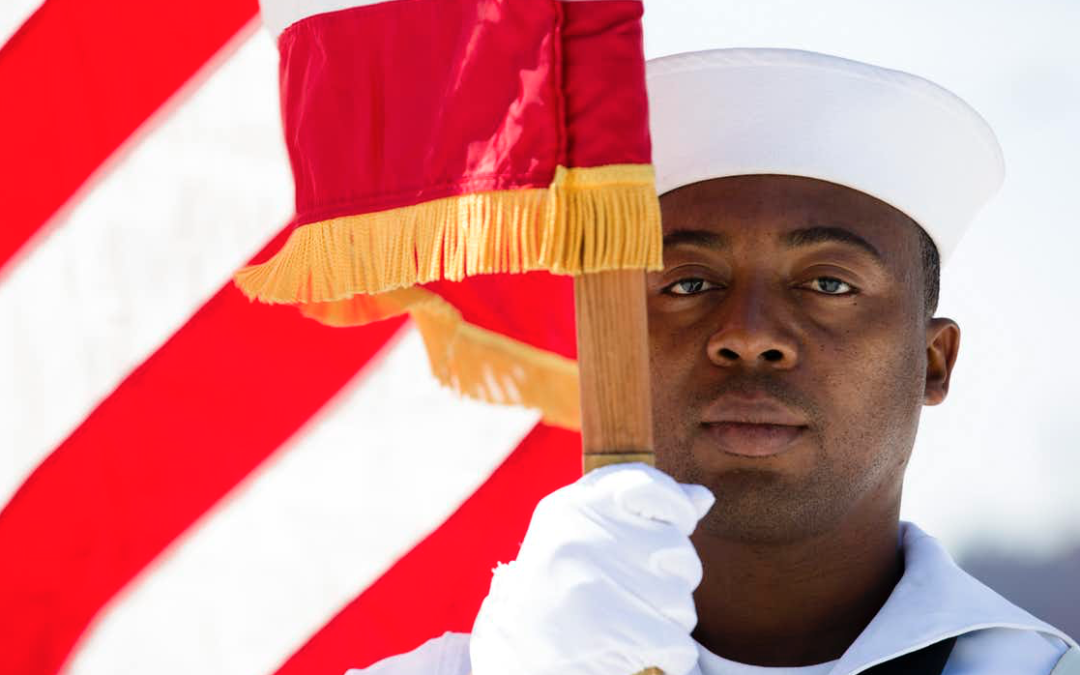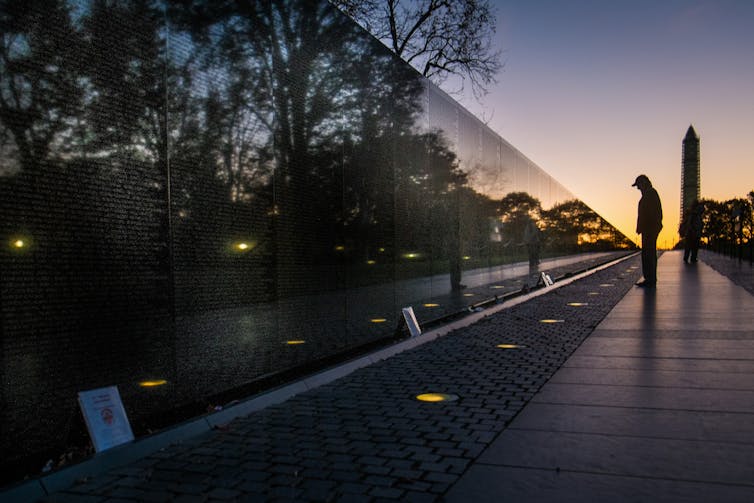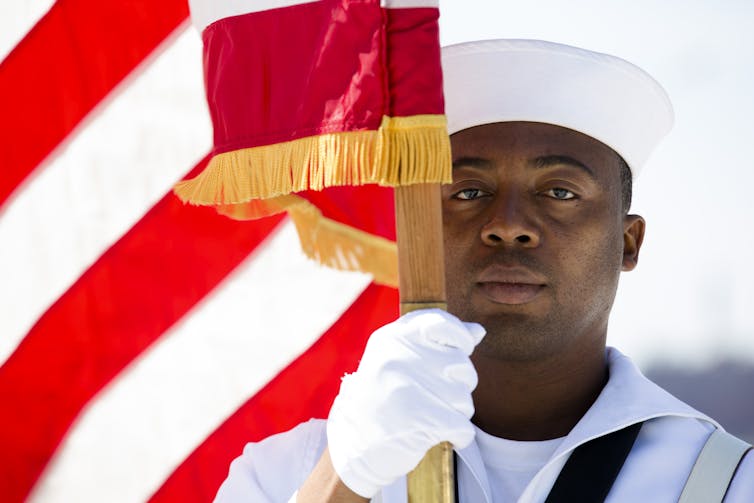
What veterans’ poems can teach us about healing on Memorial Day

A visitor pauses at the Vietnam War Memorial in Washington, D.C.AP Photo/J. David Ake, File
Memorial Day, a national holiday to honor the 1.17 million men and women who have died to create and maintain the freedoms outlined in our Constitution, is not the only Memorial Day.
The holiday emerged from the Civil War as a celebration almost exclusively for veterans of the Union Army to remember those who had died. Veterans and their families from Confederate states held their own celebrations. Thus, it remains fraught with conflict and ambiguity.
In 2017, seven states – Alabama, Florida, Georgia, Mississippi, South Carolina, Texas and Virginia – chose to also celebrate some form of Confederate Memorial Day. It’s usually celebrated on April 26 – the day associated with the surrender of General Joe Johnston, nine days after General Robert E. Lee’s surrender at Appomattox at the end of the Civil War.
How can we overcome these deep divides?
Having served 28 years in the U.S. Army and as a teacher and researcher who studies the roles veterans and their family play in society, I believe poems written by veterans that focus on honoring those who have died may give us a clue.
Bridging divisions
Tension between North and South remains. We see it not only on days dedicated to remembrance. It surfaces daily as communities such as New Orleans wrestle with whether or not to keep memorial statues honoring Confederate leaders like Robert E. Lee.

Seaman Daniel Odoi of the Navy Operational Support Center of New York City presents the American flag on Memorial Day 2013.AP Photo/John Minchillo
One poet who does not ignore these divides is Yusef Komunyakaa, an Army veteran who served in Vietnam from 1969 to 1970 and earned a Bronze Star. He is now a professor at New York University.
In “Facing It,” a poem about visiting the Vietnam War Memorial, Komunyakaa, an African-American, confronts the wall and issues linked to war and race. He writes:
“My black face fades / hiding inside the black granite.”
But he is also a veteran honoring those who died; he is balancing the pain of loss with the guilt of not being a name on the wall:
“I go down the 58,022 names, / half-expecting to find / my own in letters like smoke. / I touch the name Andrew Johnson; / I see the booby trap’s white flash.”
The poem ends with two powerful images that offer a glimmer of hope:
“A white vet’s image floats / closer to me, then his pale eyes / look through mine. I’m a window. / He’s lost his right arm / inside the stone. In the black mirror / a woman’s trying to erase names: / No, she’s brushing a boy’s hair.”
The image of the speaker becoming a “window” addresses how two vets, one white and one black, bridge the racial divide and become linked through shared acts of sacrifice and remembrance. Yet even with such a positive affirming metaphor, the speaker’s mind and heart are not fully at ease.
The next image creates dissonance and worry: Will the names be erased? The concluding line relieves that worry – the names are not being erased. More importantly, the final image of a simple act of caring calls to mind the sacrifices made to protect women and children by those whose names are on the wall. As a result, their image in the stone becomes a living memorial.
Memory and reflection
We can also learn from Brock Jones, an Army veteran who served three tours of duty in Iraq and one in Afghanistan. He named his award-winning book “Cenotaph,” the name for a tomb to honor those whose graves lie elsewhere. By using the name of a monument for those not present, a monument with historical ties to ancient Greece and Egypt as well as our own culture, Brock highlights how honoring the dead goes beyond culture and country.
Jones’ poems do not focus outward toward social strife, but inward. They address language’s inability to capture or express loss linked to memories of war. They also point to how those remaining alive, particularly those who have not served, might come to understand the depth of the sacrifice expressed by memorials and, by extension, Memorial Day.
In “Arkansas,” a poem that takes place at the Arkansas pillar, one of 56 pillars at the National WWII Memorial in Washington, D.C., the speaker remembers a journey with his grandfather:
“dead eight years ago this summer / to the Atlantic pavilion engraved / with foreign names he never forgot. / Bastogne. / Yeah, we was there. / St. Marie Eglise. / We was near there.”
The poem ends with the grandfather described as “a hunched figure, in front of ARKANSAS. Still, in front of ARKANSAS.” The grandfather is burdened by memories he carries, memories that render him “still” (motionless), memories that will remain with him “still.”
“Memorial from a Park Bench” offers a broader perspective, one that any visitor sitting on a bench in front of a memorial might experience. For the visitor, the memorial becomes “an opened book,” a place where “A word loses its ability to conjure / trapped inside a black mirror.”
The words are “names,” which “could be lines / of poems or a grocery list. / They could be just lines.” But they are not “just lines.”
At poem’s end, when all is contemplated, “Here are names and black stone / and your only reflection.”
Jones shifts the emotional and intellectual burden from the person on the bench to the poem’s readers, and thus to broader society. These words cannot be just lines or lists; they become, by being memorialized in a black stone, a “mirror,” the reader’s and thus society’s “reflection.” All on the bench are implicated; the names died for us, and, as a result, are us.
Memorial Day and mindfulness
Memorial Day may have “official” roots honoring Union dead, but veteran poets of recent wars serving a United States have found ways to honor all those who have died in battle.
Our country may be divided, but by taking a moment to pause and reflect on names etched on monument walls or gravestones, everyone on benches may see their own reflections, and in so doing further the task President Abraham Lincoln outlined in his 1865 Second Inaugural Address “to bind up the nation’s wounds…to do all which may achieve and cherish a just and lasting peace among ourselves and with all nations.”
By being mindful, we might understand what Robert Dana, a WWII vet wrote in “At the Vietnam War Memorial in Washington, D.C.”: that “These lives once theirs / are now ours.”![]()
James Dubinsky, Associate Professor of English, Virginia Tech
This article is republished from The Conversation under a Creative Commons license. Read the original article.
